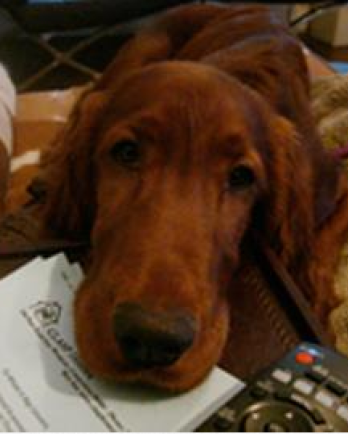MAAP—Navigating the journey your pet will take if you cannot provide care by Debra A. Vey Voda-Hamilton
When you share your life with an animal companion, planning for your loved one’s short- and long-term care is imperative. They are counting on you to assure their care no matter what. The older your pet is, the more they need a plan for future care. Most people believe that setting up directives in their will for the future care of their pet is enough. Yet what happens to your pet if the will is inoperative because you are not dead or there is a delay in accessing your directives or funds for six months to a year in probate? What if the need to care for your pet is due to disaster, disability, disease, delay, or divorce? In these scenarios are you prepared? Have you answered key questions? By following the four steps below you will gain peace of mind for the future care of your beloved companion.
The following tips will create a future pet care plan your pets can live with. It starts with drawing a MAAP.
Make a plan outlining the care you would like to have your pets receive.
Address each of your pets and their unique needs.
Appoint at least three caregivers; only one can be a family member.
Publish your plans and keep them readily available.
Make a plan outlining the kind of care you would like your pet to receive. This directive assumes you are permanently or temporarily incapable of personally providing the care your pet needs to receive. Your pet caregiver will be grateful that you provided this unique and individualized information.
Address your pet’s uniqueness by listing their identifying characteristics, including color, sex, age, and microchip number, if applicable. This information will be invaluable to those left to care for your beloved companions. This outline should cover their eating habits and personality traits. By creating this document you enable the person caring for your pet to know his or her common behavior. It seamlessly allows another to step into your shoes.
Appoint three pet caregivers to take over the current needs of your pet if life circumstances occur that limit your ability to care for them. Appointing three caregivers in succession helps hedge your bet. Only one family member can be appointed as a caregiver. This is very important. If you cannot care for your pets, chances are that you need assistance with your own care. Your family will be providing it. Enabling them to have someone else look after your pets will be a welcome relief. Check in often to confirm with the people you have appointed to care for your pets that they still can. People may agree to care for your dog or cat when circumstances permit such care. However, things change, and when called upon to take your pet they may not be able to follow through. You need to know that before it occurs.
Publish the plans you make. Publishing your plan, your pet information, and the names of the three people you appointed to care for your pet helps those who have assumed the responsibility of caring for your pets know the who, what, and where of your pet care plan. Make sure everyone in your life knows where this pet directive is so they can easily access this important information upon your death, disability, disaster, disease, delay, or divorce.
Did you know it could sometimes take up to six months and often 12 months to probate a will? What happens to your pet in the meantime? Your will does not protect your animals until it is read. Yet your pet needs those around you to know immediately how you want them cared for, who is available to help provide that care, and how they will get reimbursed for their generosity. You may consider setting aside funds to pay for this care. Setting money aside in a pet trust or annuity can be lifesaver for your pet when it comes to their future care. Ask your financial advisor or estate planner about how to provide funding to a pet trust or from an annuity.
This MAAP of your pet’s future care needs to be created before something happens to you. It is not only about end-of-life dispersal of your pet. If you trip, fall, and injure yourself, who will take care of you and your companion while you heal? You are still alive, yet you cannot care for your pet and he or she needs care immediately. Having a MAAP to follow, taking these lifesavings steps now, will assure your pet is well cared for in the event you cannot provide that care yourself.
In future blogs I will go into detail about each step in creating a MAAP for your pets. Stay tuned for details on how to register for our pet care planning webinar on November 17 (it's free to join us and you’ll get some additional gifts to help you protect your pet even more!).



